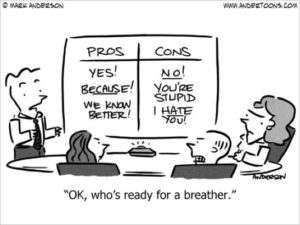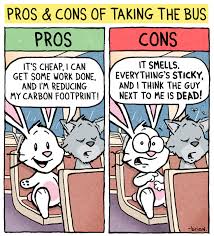In last week’s blog, Implementing a New Software System: When Is the Squeeze Worth the Juice?, we discussed whether the time had come for your organization to implement a new software system. This week, we will work under the assumption that you have decided to move to a new system. The next question for you to consider is if you will implement a Best-of-Breed (BOB) solution or an ERP solution, which is the focus for this article.
This blog has two primary sections:
- BOB vs ERP: Pros and Cons
- Making the Decision
BOB vs ERP: PROS AND CONS
Before beginning to discuss the pros and cons of these two options, let’s first review the definition of a BOB solution versus an ERP solution:
- Best-of-Breed (BOB): Simply put, BOB is the best software product in it’s particular functional area (i.e. HR, Finance, Manufacturing, Warehousing, etc.). When adopting a BOB strategy, a company’s software system is typically made up of several best-of-breed components, with particular emphasis on it’s core business areas (i.e. Sales, Manufacturing, Supply Chain Planning, etc.)
- Enterprise Resource Planning (ERP): Generally speaking, an ERP is the system that a company uses to manage/execute the entirety (or the vast majority) of it’s business processes. To be clear, the company is using one system (such as SAP or Oracle) to execute all it’s processes: finance, manufacturing, sales, supply chain planning, HR, warehouse, etc. This system typically has one common database, and the various modules are integrated with each other.
With these definitions in mind, here are the pros and cons of both options:
BOB PROS
- Greater Likelihood of Meeting Requirements: Because a BOB solution is specific to a particular business area, it will usually have a more complete functional solution for that area than an ERP. (A BOB solution tends to be deep, but not broad, whereas an ERP tends to be broad, but not deep in any particular area.) This means that the BOB solution has a greater chance to satisfy your requirements with its ‘out-of-the-box’ functionality.
 Your Eggs Are Not All in One Basket: It can be problematic if one vendor is supplying your complete solution: you do not have a lot of negotiating power. A BOB strategy, on the other hand, leaves you with significantly greater ability to maneuver. (i.e. If a vendor supplying a BOB component becomes problematic, it is much easier to cut them loose than if they were an ERP vendor. The BOB vendor has supplied the system which services only one business area, whereas an ERP vendor has supplied the company’s entire IT solution.)
Your Eggs Are Not All in One Basket: It can be problematic if one vendor is supplying your complete solution: you do not have a lot of negotiating power. A BOB strategy, on the other hand, leaves you with significantly greater ability to maneuver. (i.e. If a vendor supplying a BOB component becomes problematic, it is much easier to cut them loose than if they were an ERP vendor. The BOB vendor has supplied the system which services only one business area, whereas an ERP vendor has supplied the company’s entire IT solution.)- Faster Implementations: If your project is time-constrained, it is generally faster (and cheaper) to implement a BOB solution that it is to implement an ERP system.
- Greater Choice: Whereas the ERP space tends to have relatively few players, there are usually many vendors operating in the BOB environment for a particular functional area. (More choice is obviously a good thing for you as a customer.)
- Operational Independence: If your system is comprised of a series of BOB components, each can be upgraded or configured independently of the other. Therefore, implementing a new version of the software, or moving to a new support package, is much less complex than it would be in an ERP environment.
BOB CONS
- Complex Integration: Because there will likely be many different software packages making up your overall BOB solution, integrating all these packages (which is likely a necessity) could be both costly and time-consuming.
- Potentially Complex Environment for Issue Resolution: If a serious system problem occurs, it may be difficult to pinpoint the exact source of the problem across the various BOB components. As well, multiple BOB components means multiple BOB vendors, and you may be caught up trying to referee finger-pointing between the vendors as you seek to resolve the problem.
- Data Integrity: Entering data in multiple softwares, and then having it move between these softwares, can cause problems. And these problems – should they occur – are notoriously difficult to isolate. (It should be noted that the tools for managing data entry and migration have improved considerably in recent years.)

- Data Consolidation: Related to the item above is the issue of data consolidation. (Data Consolidation refers to gathering data from various areas into one common source.) In a BOB environment, effective consolidation of your data may demand that you build a Data Warehouse, adding cost and complexity to your project.
- Increased Demands on Support Team: As you have probably gathered by now, BOB solutions can be complex to manage and support. This means there will be additional demands placed on your IT organization. Is IT structured be able to support this type of environment?
- Multiple User Logons: If your solution is composed of multiple BOB softwares, this could mean that your user base will have multiple sets of logon credentials. This situation is both both painful and risky (from a security perspective). You could address this via an Active Directory solution, but developing such a solution adds more complexity to your project.
- Dis-jointed Business Processes: It’s entirely possible – even likely – that in a BOB environment, a business process may cross several individual systems. This makes business process management – and business process mapping – more difficult.
ERP PROS
- Seamless Data Integration: Because an ERP is one system, all data is ‘automatically’ integrated, and seamlessly flows from one ERP area (or module) to the other.
- Single-system Implementation: In a BOB environment you will have to ‘stitch together’ the various softwares in order to integrate them. An ERP is delivered as a single system, which means that the communication between the various modules is ‘built in’.
- One Database: An ERP has a single database, which means that you have ‘one source of the truth’ when it comes to reporting and data extraction.
- Single Supplier: In the ‘BOB PROS’ section, I mentioned that being dependent on a single vendor could beproblematic. However, there is also an upside to this arrangement: you have only one ‘throat to choke’. In other words, whatever problems you are encountering with the system, you only have to deal with one vendor.
- Standard Technology Across the Enterprise: Instead of a situation where you potentially have to deal with multiple technologies scattered across the enterprise, an ERP is typically delivered using only one technology.
- Single User Logon: An ERP can be accessed through a single logon, meaning your users have only one set of logon credentials.
- Less Complex Training: The fact that you are accessing only one, fully-integrated system means user training is easier, as you do not need to consider how to move from one software to another.
ERP CONS
- Increased Need for Customization: Because an ERP typically has ‘lighter’ out-of the-box functionality than a BOB solution, there may be a greater need for complex configuration (or even customization) in order to provide key functionality.
- Limitations on Functionality: Related to the above, with an ERP you may find yourself in a situation where ‘you can’t get there from here’. In other words, the ERP simply cannot provide the key piece of functionality you need. This would mean a re-design of your business process, which is a very painful exercise! A BOB solution will have much more robust functionality, and so a greater likelihood that this situation will be avoided.
- Complex Implementations: ERP implementations tend to be lengthy, costly and time-consuming.
[NOTE: While I have listed only three ‘ERP Cons’, there are many others. They are simply the opposite of the ‘BOB PROS’ listed above.]
COST: PRO OR CON?
I have deliberately not categorized ‘cost’ as a pro or a con for either ERP or BOB. The reason for this is that it is not simple to categorize. In fact, there are pros and cons for cost under both options.
As an example, the licensing and support costs for the multiple components of a BOB system may be higher than for an ERP. However, the consulting costs associated with the amount of configuration/customization required when installing an ERP system will likely be higher than for a BOB solution.
Therefore. in my opinion, it is not possible to say definitively which side of the pro/con line ‘cost’ lies on. Each unique variation of an ERP or BOB solution will need to be assessed on it’s own merit.
MAKING THE DECISION
Now that we have completed our pro/con analysis, the time has come to make a decision. However, it is not the intent of this article to make that decision for you. Rather, we have listed a series of questions below, the answers to which should guide you on your way.
- Degree of Fit: How important to you is it that the solution provide a high degree of fit to your requirements? For example, if you demand that the solution address 95% or more of your requirements then a BOB software may be the way to go. If you’re satisfied with an 80% fit, then an ERP could do the job.
- Maturity of Your IT Department: You will need a very mature, robust IT department to support a BOB environment.
- Are You Comfortable Being Committed to a Single Vendor? This is a tremendously important question to answer, as your choice will have long-term ramifications. If you decide you are OK relying on – and conducting future negotiations – with a single vendor, than that makes choosing the ERP option more palatable. However, be aware that if the relationship goes sideways, it will be a very messy divorce!
- The Importance on Tight Integration: If having the various modules ‘talk’ seamlessly to each other is critical to your organization, this would point to you choosing the ERP route.
- Do You Have Highly-Specialized Business Processes? ERPs tend to provide standardized business processes (at least out-of-the-box). If business processes are unique or highly-specialized, a BOB solution may be more appropriate.
- Financial Viability of Vendor: Every year, many software vendors go out of business, and the majority of these are in the BOB space. If you are thinking about installing a BOB system, a thorough examination of the vendor’s financials is essential. ( You do NOT want to find yourself in a situation where your software provider goes the way of the dodo!)
- Technology Platforms: Your vendor should be able to provide their solution across multiple technology platforms: on-premise, SAAS, hosted, etc.
- Price: It goes without saying that you need to be comfortable with the price of the solution. And I am referring not only to the up-front cost, but also to the TCO: the Total Cost of Ownership. How quickly do licensing costs increase? How many support hours are built into the contract? Are upgrades mandatory or optional, and who pays for the upgrade? These are just some of the questions you need to ask yourself.
SUMMARY
The decision to move ahead with an ERP or a BOB solution is obviously a difficult one, and requires much thought. However, we hope that this article has provided information you will find useful in making this critical decision.
NEXT WEEK
Next week’s blog will focus on another important decision surrounding the installation of a software system: SAAS or On-Premise?


